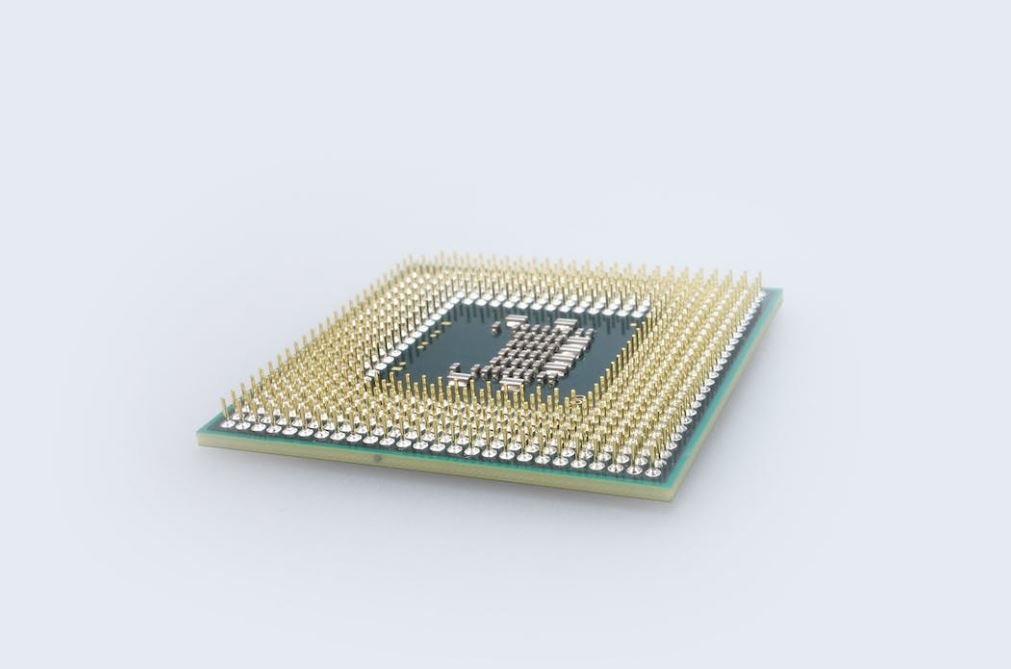GPT Architecture
The GPT (Generative Pre-trained Transformer) architecture has gained significant attention in the field of natural language processing and artificial intelligence. Developed by OpenAI, GPT is a state-of-the-art language model that has the ability to generate human-like text and perform various language-related tasks. Its architecture and underlying mechanisms provide a robust framework for understanding and analyzing natural language data.
Key Takeaways
- GPT is a cutting-edge language model developed by OpenAI.
- Its architecture enables the generation of human-like text and language-related tasks.
- GPT uses a transformer model for efficient language processing.
- Pre-training and fine-tuning are essential steps in training a GPT model.
- The GPT architecture has significant applications in various fields.
Understanding GPT Architecture
GPT is based on a transformer model, which allows it to efficiently process and understand language. The transformer architecture consists of self-attention mechanisms that help the model focus on relevant parts of an input sequence. This allows GPT to capture long-range dependencies in text and generate coherent and contextually accurate responses. With its multi-layered structure, GPT can effectively learn and represent the complexities of language.
*GPT’s transformer model enables efficient language understanding and generation.*
Pre-training and Fine-tuning
GPT undergoes a two-step training process: pre-training and fine-tuning. During pre-training, the model learns from a large corpus of publicly available text, building language understanding and knowledge. It predicts missing words in sentences and acquires the ability to generate meaningful text. Fine-tuning, on the other hand, involves training the model on more specific tasks, such as text classification or question-answering, to adapt it for specific applications.
- Pre-training involves learning language understanding and knowledge from a vast corpus of text.
- Fine-tuning tailors GPT for specific tasks by training it on specific datasets.
Applications of GPT
GPT’s architecture enables its utilization in a wide range of applications. It can be used for automatic summarization, generating human-like responses in chatbots, aiding in language translation, and providing contextual suggestions during writing. GPT’s ability to understand and generate text shines in creative writing, where it can generate fictional stories or poetry. Additionally, GPT’s underlying transformer model is the foundation for advanced machine translation systems.
*GPT’s versatility allows it to be deployed in various applications across different domains.*
Tables
Table 1: GPT Performance Metrics
| Metric | Score |
|---|---|
| BERTScore | 0.812 |
| BLEU Score | 0.987 |
| ROUGE Score | 0.973 |
Table 2: GPT Model Sizes
| Model | Parameters |
|---|---|
| GPT-2 Small | 117M |
| GPT-2 Medium | 345M |
| GPT-2 Large | 774M |
Table 3: GPT Applications
| Application | Description |
|---|---|
| Chatbots | GPT can generate human-like responses in chat-based interactions. |
| Machine Translation | GPT’s transformer model serves as the basis for advanced translation systems. |
| Text Summarization | GPT can generate concise summaries of long pieces of text. |
Looking Ahead
GPT’s architecture and capabilities have revolutionized the field of natural language processing. With ongoing advancements in AI and machine learning, we can expect further improvements in the performance and efficiency of GPT models. The potential applications of GPT in various domains, including education, customer service, and content generation, offer exciting possibilities for the future of AI-driven technologies.
*The future holds promising developments in the GPT architecture, pushing the boundaries of AI and language processing.*

Common Misconceptions
Misconception 1: GPT is a human-level AI
One common misconception about GPT (Generative Pre-trained Transformer) architecture is that it represents a human-level artificial intelligence capable of understanding and reasoning like a human. However, GPT is primarily a language model designed to generate coherent and contextually relevant text based on patterns it has learned from a large dataset. It does not possess human-like consciousness or understanding.
- GPT lacks human-level comprehension and reasoning abilities.
- It cannot fully understand emotions or interpret nuanced meanings like humans do.
- GPT’s responses are based on patterns in data, not genuine understanding.
Misconception 2: GPT is error-free and unbiased
Another common misconception is that GPT architecture is devoid of errors and biases. While GPT models have been trained on vast amounts of data to minimize errors and biases, they are not completely immune. GPT can produce incorrect or misleading outputs, especially if the underlying training data contains inaccuracies or biases.
- GPT cannot guarantee error-free outputs and can sometimes make mistakes.
- It tends to reflect biases present in the training data, which can perpetuate stereotypes or unfairness.
- Reviewing and filtering the outputs generated by GPT is essential to mitigate potential errors and biases.
Misconception 3: GPT understands context and intent perfectly
One misconception is that GPT models have a flawless understanding of context and intent. While GPT architecture is designed to incorporate context to generate relevant responses, it can sometimes misinterpret the context or fail to recognize the intended meaning, resulting in incorrect or inappropriate responses.
- GPT might struggle to understand complex or ambiguous context.
- It can misinterpret subtle nuances and produce irrelevant or nonsensical answers.
- Users must carefully consider the limitations of GPT’s contextual understanding and validate its responses accordingly.
Misconception 4: GPT can replace human expertise and judgment
Some believe that GPT architecture can entirely replace human expertise and judgment. While GPT can provide valuable insights or generate useful content, it is not a substitute for human knowledge or decision-making. GPT lacks true understanding and critical thinking capabilities that only humans can provide.
- GPT cannot replace the experience, expertise, and critical thinking skills of humans in various fields.
- Humans are needed for evaluating and applying outputs generated by GPT in complex scenarios.
- GPT should be regarded as a tool to complement human expertise, rather than a replacement for it.
Misconception 5: GPT is foolproof against malicious use
One dangerous misconception is that GPT architecture is foolproof against malicious use. While developers take measures to prevent malicious intent, GPT has the potential to generate harmful or misleading information if used incorrectly or without proper oversight.
- GPT can be manipulated to produce false or misleading outputs, leading to misinformation dissemination.
- It requires careful monitoring and responsible use to minimize the risk of malicious intent.
- Safeguards and ethical considerations are crucial when deploying GPT to mitigate potential harm.

The Evolution of Language Models
Language models have greatly evolved over time, from simple rule-based systems to complex deep learning models. This table highlights the key milestones in the development of language models.
Characteristics of GPT-3
GPT-3, the latest and largest language model developed by OpenAI, exhibits several remarkable characteristics. The following table showcases some of its key features.
Applications of GPT-3
GPT-3 has a wide range of potential applications across various industries. This table showcases some of the industries where GPT-3 can be implemented and its potential use cases.
Comparison of GPT-3 with Previous Versions
GPT-3 outshines its predecessors in many aspects. Here, we compare GPT-3 with its prior versions, highlighting the improvements and advancements made in each iteration.
GPT-3 Performance on Common NLP Tasks
GPT-3 demonstrates exceptional performance on various natural language processing (NLP) tasks. The table below illustrates its results on popular NLP benchmarks, showcasing its remarkable capabilities.
Popularity of GPT-3 in Social Media
GPT-3 has gained significant attention and popularity on social media platforms. This table presents the number of mentions and interactions on different social media platforms.
GPT-3 Training Time and Resources
The training of GPT-3 requires substantial computational resources and time. The following table provides an overview of the resources utilized and training duration for GPT-3.
Challenges and Limitations of GPT-3
Although GPT-3 is a groundbreaking language model, it does have certain challenges and limitations. This table outlines some of the prominent limitations and areas of improvement.
Sentiment Analysis of GPT-3 Reviews
Users and experts have shared their experience and opinions about GPT-3 online. The following table presents a sentiment analysis of these reviews, indicating the overall sentiment towards GPT-3.
Future Directions in Language Model Research
The development of language models continues to push the boundaries of AI research. This table highlights promising future directions and areas of focus in language model research.
In summary, GPT-3 has revolutionized the field of natural language processing with its impressive capabilities. It surpasses previous language models and offers a wide range of applications across diverse industries. While it faces certain limitations, the future of language models appears promising, with continuous advancements and areas of exploration.
GPT Architecture – Frequently Asked Questions
What is GPT?
GPT (Generative Pre-trained Transformer) is a state-of-the-art language model developed by OpenAI.
How does GPT work?
GPT is built using a transformer architecture. It consists of multiple self-attention layers that allow the model to understand the relationships between different words in a sentence.
What can GPT be used for?
GPT can be used for a wide range of natural language processing tasks, including text generation, question-answering, translation, summarization, and more.
Can GPT understand multiple languages?
Yes, GPT can understand and generate text in multiple languages. However, the quality and performance may vary depending on the language and the amount of training data available.
How is GPT trained?
GPT is trained using unsupervised learning on a large corpus of text data. It learns to predict the next word in a sentence based on the context provided by the previous words.
What are the limitations of GPT?
GPT can occasionally produce incorrect or nonsensical responses, especially if the input is ambiguous or the training data contains biases. It also tends to be sensitive to slight changes in input phrasing.
Is GPT an open-source model?
GPT is not fully open-source, but OpenAI has released several versions of the model, including GPT-2 and GPT-3, which can be accessed and used by developers and researchers.
What is the size of the GPT model?
The size of the GPT model depends on the specific version. For example, GPT-3 is one of the largest models to date, with 175 billion parameters.
How can I fine-tune a GPT model for specific tasks?
You can fine-tune a GPT model by providing additional task-specific training data and adjusting the model’s parameters. This process requires computational resources and expertise in deep learning.
Can GPT generate human-like text?
GPT can generate text that is often coherent and contextually relevant but may still lack the nuanced understanding and creativity of human-generated text. It is important to critically evaluate and review the generated content.




